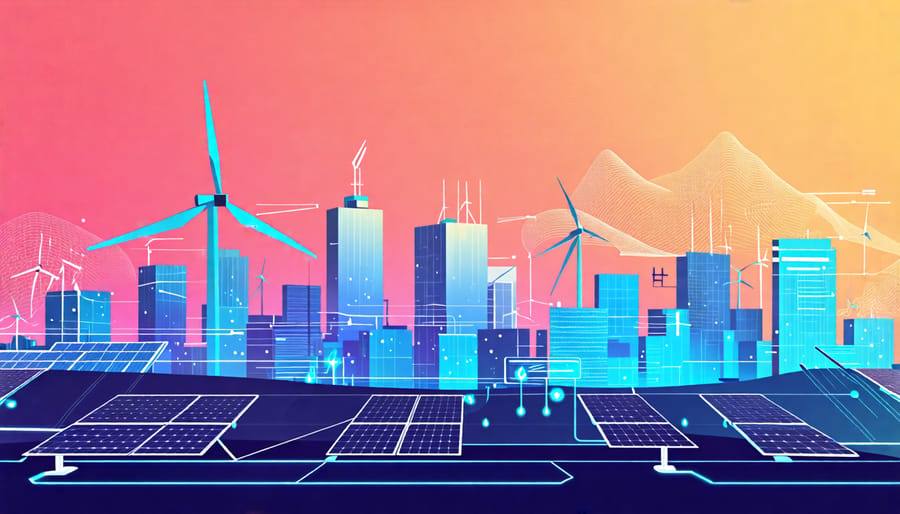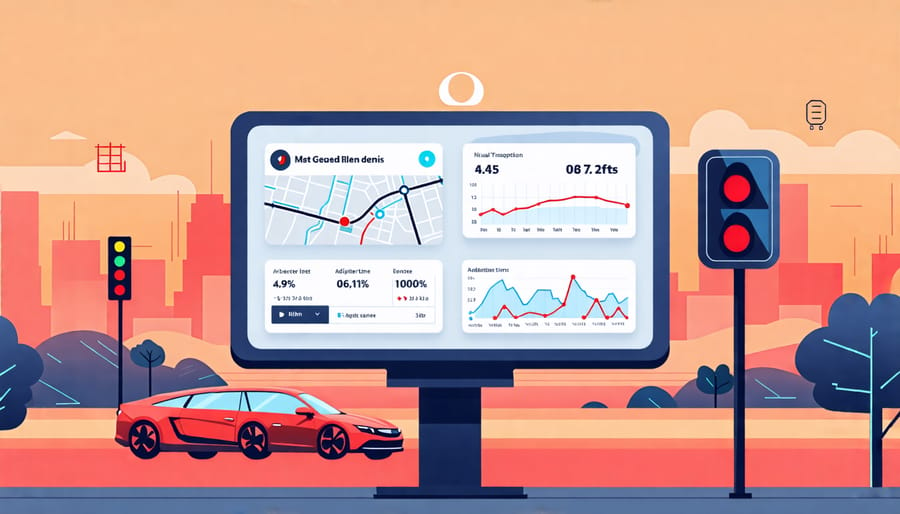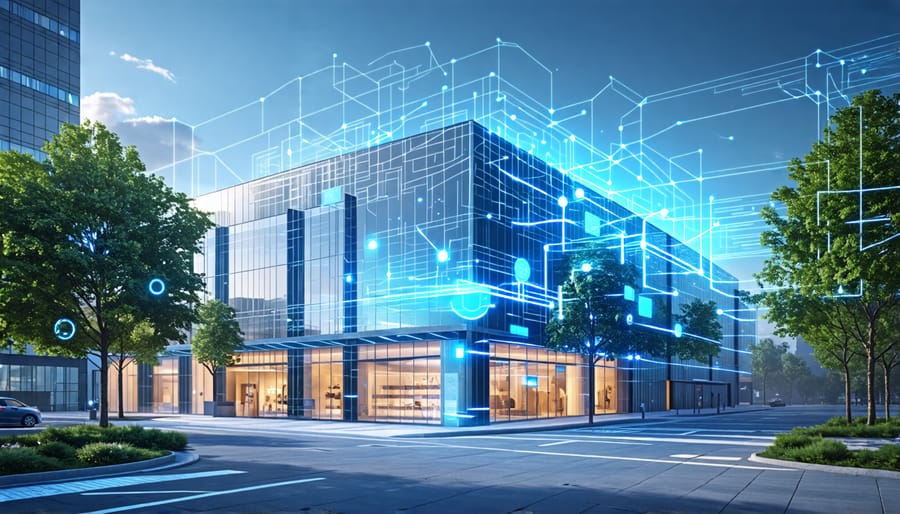Imagine a city that thinks for itself – where traffic flows smoothly, energy is used efficiently, and citizens enjoy enhanced safety and convenience. This is the promise of smart city initiatives, which are transforming urban landscapes around the globe. By harnessing advanced technologies like the Internet of Things (IoT), artificial intelligence, and big data analytics, these initiatives are ushering in a new era of intelligent, connected, and sustainable cities. Smart city projects span a wide range of areas, from energy management and transportation to infrastructure and citizen services. They aim to optimize resource utilization, reduce environmental impact, and improve quality of life for residents. For example, smart energy grids enable real-time monitoring and control of power consumption, while intelligent transportation systems optimize traffic flow and reduce congestion. Smart infrastructure, such as connected streetlights and waste management systems, enhances operational efficiency and reduces costs. The future of urban development lies in the seamless integration of these technologies, creating a holistic ecosystem that responds dynamically to the needs of its inhabitants. As construction professionals and industry decision-makers, it is crucial to stay informed about the latest trends and innovations in smart city development. By embracing these initiatives, we can build more livable, efficient, and resilient cities for generations to come.

Smart Energy Systems
Smart Metering Infrastructure
Smart metering infrastructure plays a crucial role in optimizing energy consumption and enabling demand response programs in smart cities. These advanced meters provide real-time data on energy usage, allowing utility companies to better manage supply and demand, reduce waste, and improve efficiency. By analyzing consumption patterns, smart meters can identify areas for improvement and help consumers make informed decisions about their energy use. This data-driven approach enables the implementation of dynamic pricing models, incentivizing consumers to shift their energy use to off-peak hours, thereby reducing strain on the grid during high-demand periods. Smart meters also facilitate the integration of renewable energy sources, such as solar and wind power, by providing the necessary data to balance supply and demand effectively. Furthermore, these meters can detect and report power outages, enabling faster response times and minimizing disruptions. By empowering consumers with detailed insights into their energy consumption, smart meters encourage the adoption of energy-efficient homes and practices, ultimately contributing to a more sustainable and resilient urban environment. As smart city initiatives continue to evolve, the widespread deployment of smart metering infrastructure will be essential in driving the transition to a more efficient, responsive, and environmentally conscious energy landscape.
Microgrids and Energy Self-Sufficiency
Microgrids are emerging as a key solution for cities striving to achieve energy independence and resilience. By generating and distributing power locally, microgrids can operate autonomously from the main grid, ensuring a reliable energy supply even during outages. Cities are increasingly adopting microgrid technologies, such as solar panels, wind turbines, and energy storage systems, to reduce reliance on centralized power plants and minimize the impact of grid failures. One notable example is the Brooklyn Microgrid project, which enables residents to produce and sell excess renewable energy to their neighbors using blockchain technology. This peer-to-peer energy trading system not only enhances community resilience but also encourages the adoption of clean energy sources. Similarly, the city of San Diego has implemented a series of microgrids to power critical infrastructure, such as fire stations and emergency shelters, during grid outages caused by natural disasters or cyber attacks. Microgrids also offer significant economic benefits for cities. By generating power locally, cities can reduce transmission losses and avoid costly grid upgrades. Furthermore, the integration of renewable energy sources and energy storage systems can help cities optimize energy consumption and lower their carbon footprint. As more cities embrace microgrid technologies, they are paving the way for a more sustainable and self-sufficient energy future.
Intelligent Transportation Networks

Real-Time Traffic Management
Smart cities leverage IoT sensors and AI-driven analytics to revolutionize traffic management and enhance road safety. By deploying a network of interconnected sensors across roads, intersections, and vehicles, real-time traffic data is collected and analyzed to optimize flow and reduce congestion. Advanced AI algorithms process this data to identify patterns, predict traffic bottlenecks, and dynamically adjust traffic light timings based on real-time conditions. This intelligent system minimizes wait times, improves travel efficiency, and reduces fuel consumption and emissions. Moreover, AI-powered video analytics monitor traffic violations, accidents, and pedestrian behavior, enabling swift incident detection and response. Predictive maintenance algorithms analyze sensor data from road infrastructure to identify potential issues and schedule proactive repairs, ensuring safer and smoother journeys. Smart parking solutions guide drivers to available spots, reducing circling and congestion. Connected vehicles communicate with traffic management systems, receiving real-time updates on road conditions, closures, and alternate routes, enhancing safety and efficiency. By harnessing the power of IoT and AI, smart cities create a more intelligent, responsive, and safer transportation ecosystem. These technologies not only improve mobility but also contribute to reduced emissions, better air quality, and enhanced overall livability for citizens.
Smart Parking Systems
Smart parking systems are revolutionizing urban mobility by leveraging advanced technologies to optimize parking space utilization and minimize search time for drivers. These intelligent solutions typically combine real-time data from sensors, cameras, and mobile apps to guide drivers to available parking spots, reducing traffic congestion and fuel consumption. By implementing smart parking management software, cities can dynamically adjust parking prices based on demand, encouraging more efficient use of limited space. Moreover, smart parking systems enable remote reservation and payment options, providing a seamless and convenient experience for users. The data collected by these systems also allows city planners to make informed decisions about parking infrastructure development and urban planning. Case studies, such as the successful implementation of smart parking in San Francisco, demonstrate the potential for these initiatives to enhance urban mobility and quality of life. As more cities adopt smart parking solutions, experts predict significant improvements in traffic flow, air quality, and overall urban efficiency.
Smart Buildings and Infrastructure

Intelligent Building Management Systems
In the age of smart cities, intelligent building management systems are revolutionizing the way commercial and residential structures operate. These advanced systems leverage cutting-edge technologies, such as IoT sensors, artificial intelligence, and data analytics, to optimize energy consumption, improve air quality, and streamline maintenance processes. By continuously monitoring and analyzing data from various building systems, smart building management platforms can make real-time adjustments to heating, cooling, lighting, and ventilation, ensuring optimal comfort for occupants while minimizing energy waste. Additionally, predictive maintenance algorithms can detect potential equipment failures before they occur, enabling proactive repairs and reducing downtime. As a result, intelligent building management systems not only contribute to the overall sustainability goals of smart cities but also generate significant cost savings for building owners and operators. By embracing these innovative solutions, the construction industry is paving the way for a greener, more efficient, and more comfortable urban future.
Smart Street Lighting
Smart street lighting is revolutionizing urban energy management and public safety. By leveraging adaptive LED technology, cities can significantly reduce energy consumption and costs associated with streetlights. These intelligent systems adjust light levels based on real-time conditions, such as traffic flow and pedestrian presence, optimizing energy use while ensuring adequate illumination. Advanced sensors and connectivity enable remote monitoring and control, facilitating predictive maintenance and rapid response to outages. Beyond energy savings, smart streetlights enhance public safety by improving visibility and reducing crime. They can also serve as a platform for additional services, such as environmental monitoring, Wi-Fi hotspots, and electric vehicle charging. Cities implementing smart lighting solutions have reported energy savings of up to 80%, translating to significant financial and environmental benefits. As an integral part of smart city infrastructure, adaptive streetlights demonstrate the power of technology in creating more sustainable, secure, and livable urban environments. With the rapid advancement of IoT and data analytics, the potential applications of smart street lighting continue to expand, making it a key driver of urban transformation in the coming years.
Citizen Engagement and Digital Services
Smart city initiatives are transforming the way citizens engage with their urban environments and access essential services. By leveraging digital technologies, these initiatives foster greater citizen participation, deliver personalized services tailored to individual needs, and bridge the digital divide to ensure equitable access for all. One key aspect of smart city citizen engagement is the use of digital platforms and mobile applications that allow residents to provide feedback, report issues, and contribute ideas for improving their communities. These tools empower citizens to actively participate in shaping the future of their cities, ensuring that urban development aligns with their needs and preferences. Moreover, smart city technologies enable the delivery of personalized services that cater to the unique requirements of each citizen. For instance, intelligent transportation systems can provide real-time information and customized route recommendations based on an individual’s travel patterns and preferences. Similarly, e-governance platforms can offer targeted information and services based on a citizen’s demographic profile, making it easier for them to access relevant resources and support. However, as cities become increasingly digital, it is crucial to address the digital divide and ensure that all citizens have equal access to these services. Smart city initiatives must prioritize digital inclusion by providing affordable internet access, digital literacy programs, and user-friendly interfaces that cater to diverse populations, including the elderly and those with disabilities. By investing in digital infrastructure, promoting digital skills development, and collaborating with community organizations, smart cities can bridge the digital divide and create a more inclusive urban environment. This not only enhances citizen engagement but also ensures that the benefits of smart city technologies are distributed equitably across all segments of society. As smart city initiatives continue to evolve, the focus on citizen engagement and personalized digital services will remain paramount. By empowering citizens to actively participate in urban governance and ensuring equitable access to digital resources, smart cities can create more responsive, inclusive, and sustainable urban environments that improve the quality of life for all residents.
Conclusion
In conclusion, smart city initiatives offer a wide range of benefits that can significantly improve the quality of life for urban residents. From optimizing energy consumption and reducing carbon emissions to streamlining transportation and enhancing public safety, these innovative solutions are transforming the way cities operate. However, to fully realize the potential of smart cities, it is crucial for all stakeholders, including government agencies, private companies, and citizens, to work together through stakeholder collaboration. By fostering open communication, sharing resources, and leveraging each other’s expertise, stakeholders can create a more cohesive and effective approach to implementing smart city technologies. As urban populations continue to grow, embracing these initiatives and promoting collaboration will be essential for building sustainable, efficient, and livable cities of the future.

